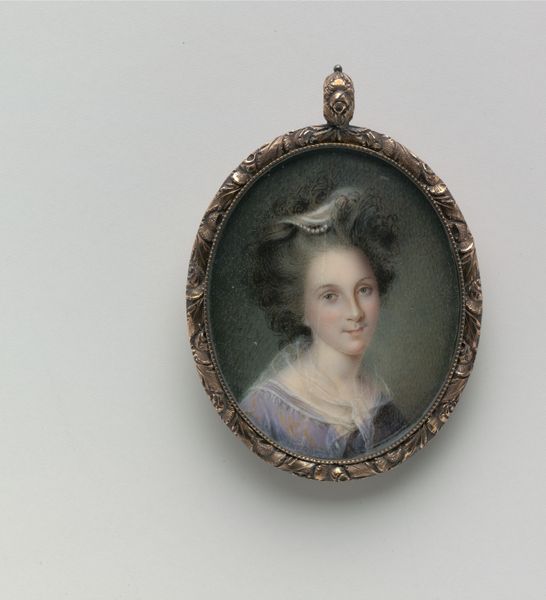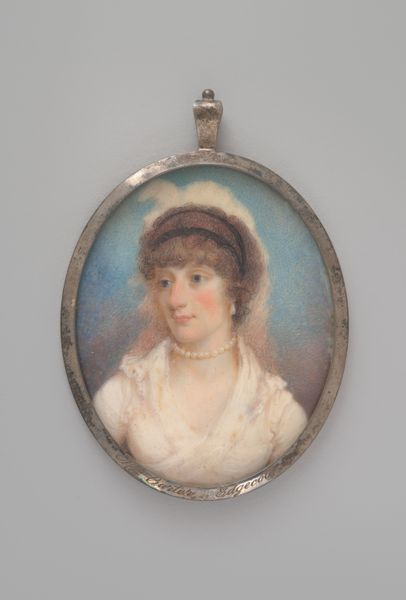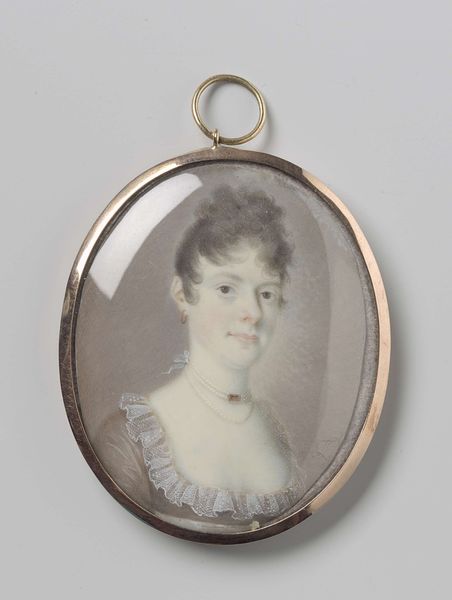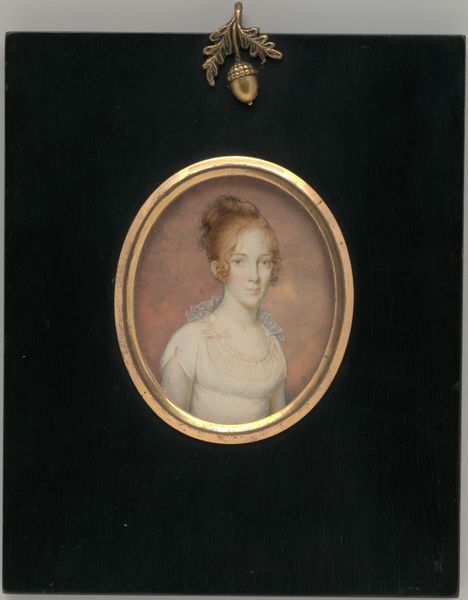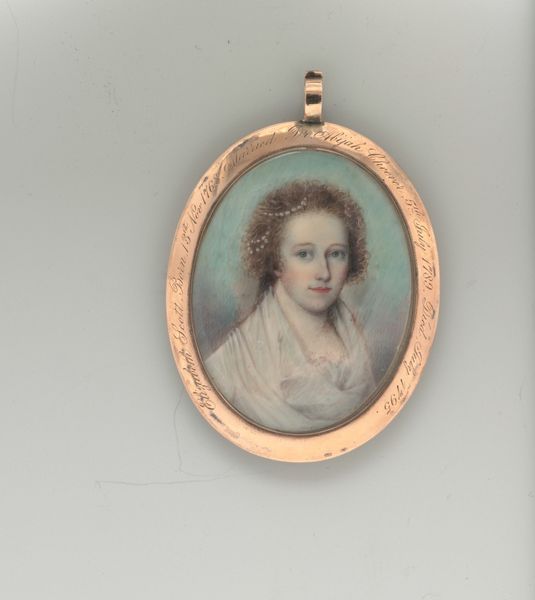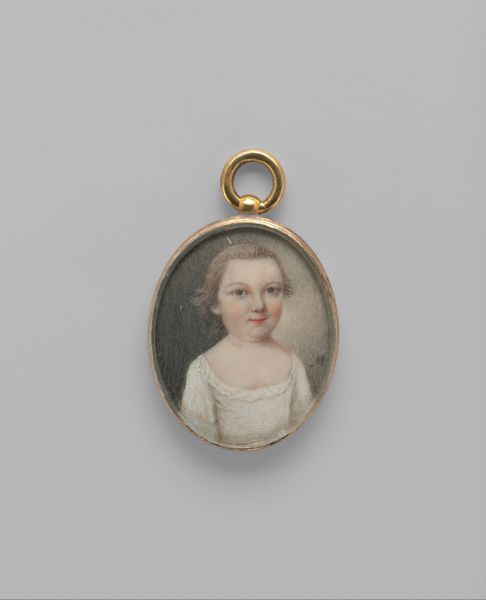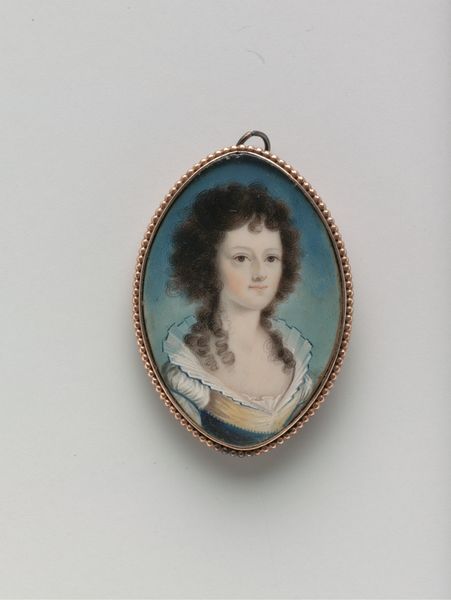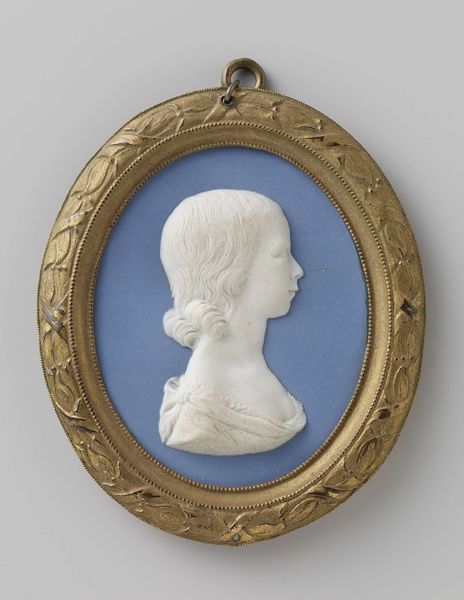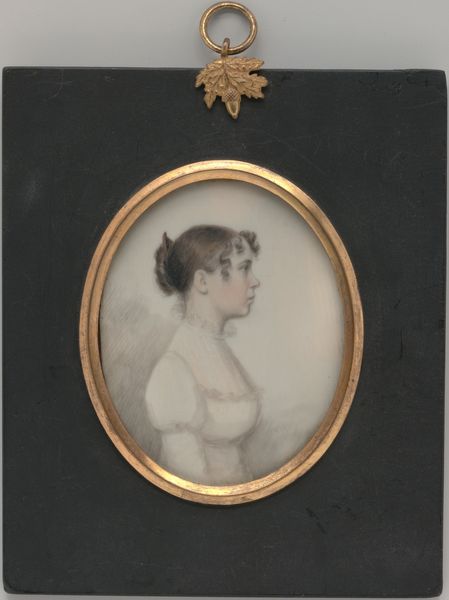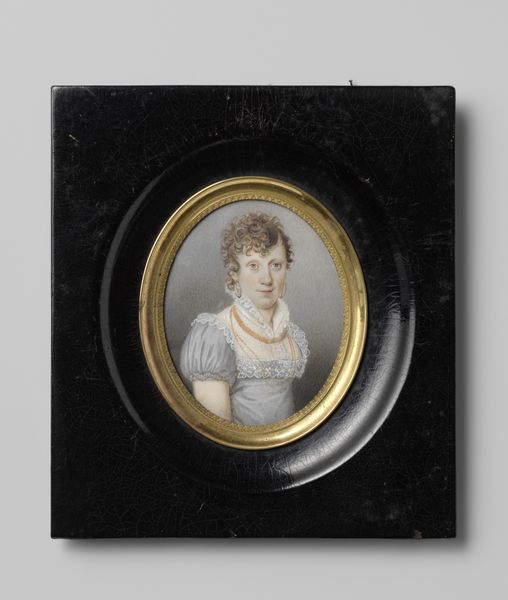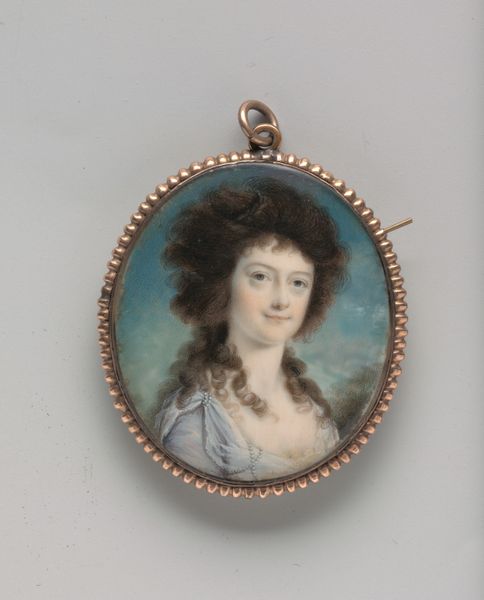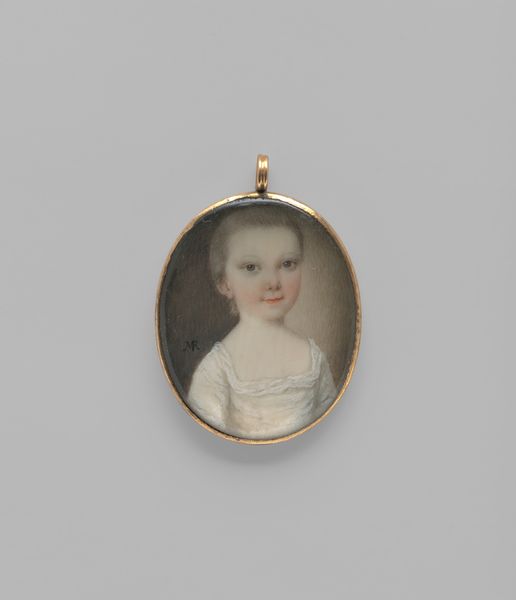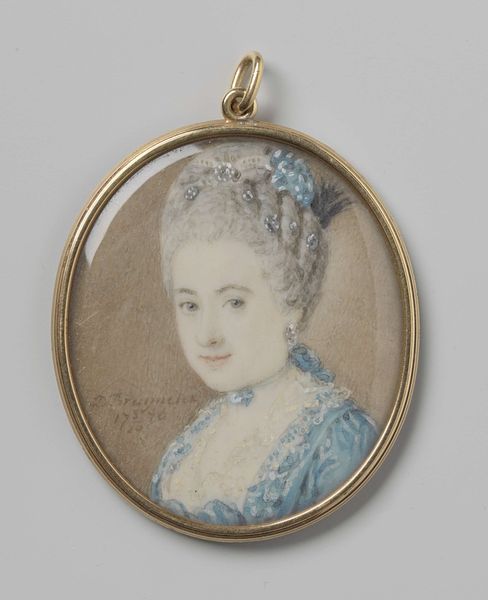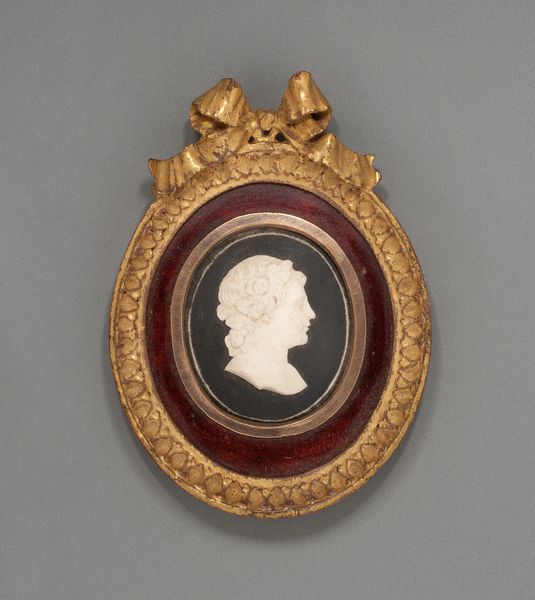
tempera, painting
#
portrait
#
neoclacissism
#
tempera
#
painting
#
historical fashion
#
romanticism
#
ceramic
#
decorative-art
#
decorative art
#
miniature
Dimensions: 2 3/4 x 2 3/16 in. (7 x 5.5 cm)
Copyright: Public Domain
Editor: This is Louis Antoine Collas’s "Portrait of a Lady" from 1816, done with tempera on, well, something! It's very small, a miniature, really, and framed beautifully. The lady herself seems demure, yet those roses in her hair hint at something more...What do you make of this piece? Curator: Indeed. Notice the oval frame within the rectangular one—like a locket holding a secret. Miniatures like these weren't just portraits; they were symbols of affection, tokens of memory. Think of the roses: symbols of love, yes, but also of ephemeral beauty, *memento mori*. This 'lady' isn't simply a likeness; she's an emblem. What story might she be telling us with her image, in relation to the person for whom it was painted? Editor: So it's about more than just appearances. What do you mean by "cultural memory?" Curator: Look at the Neoclassical style, deliberately recalling the idealized forms of antiquity. It's a conscious choice to align herself, or rather, *himself* - the person who commissioned the piece - with those virtues: order, reason, and beauty, anchoring this portrait in a specific cultural moment, while transcending it to become something lasting. Now, imagine holding that locket in your hands…what does it whisper to you? Editor: It feels...intimate, like holding a tangible piece of history. I never considered how the style choice could connect the subject to those bigger cultural ideas. Curator: Precisely. And understanding those connections helps us see beyond the surface, into the heart of the image. It’s all about decoding the visual language. Editor: Thanks, I see it in a new way now, appreciating the context. Curator: My pleasure. Every picture holds a universe of stories, waiting to be discovered.
Comments
No comments
Be the first to comment and join the conversation on the ultimate creative platform.
